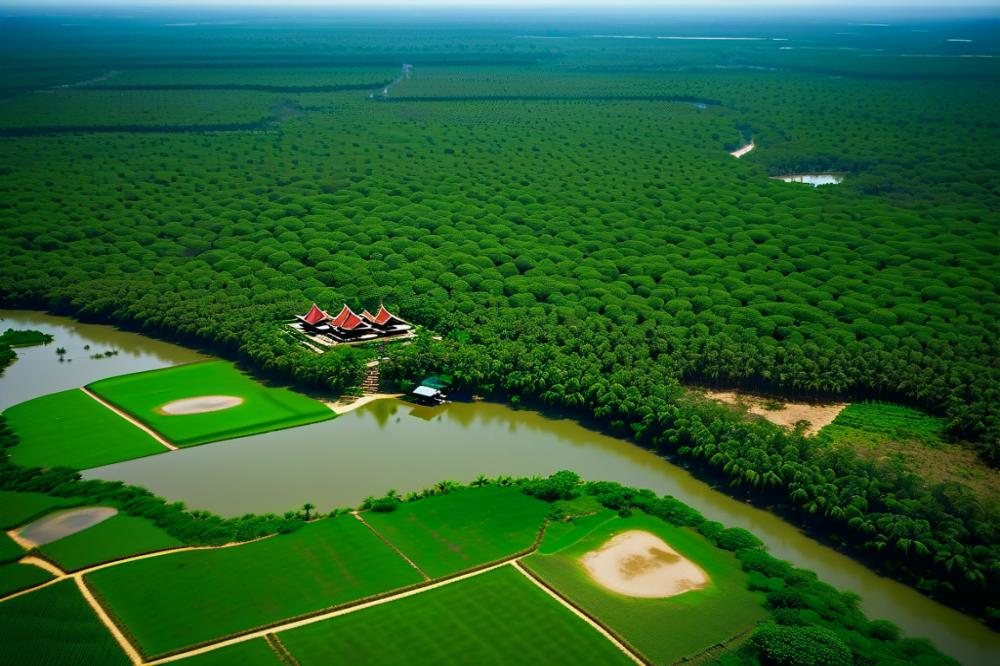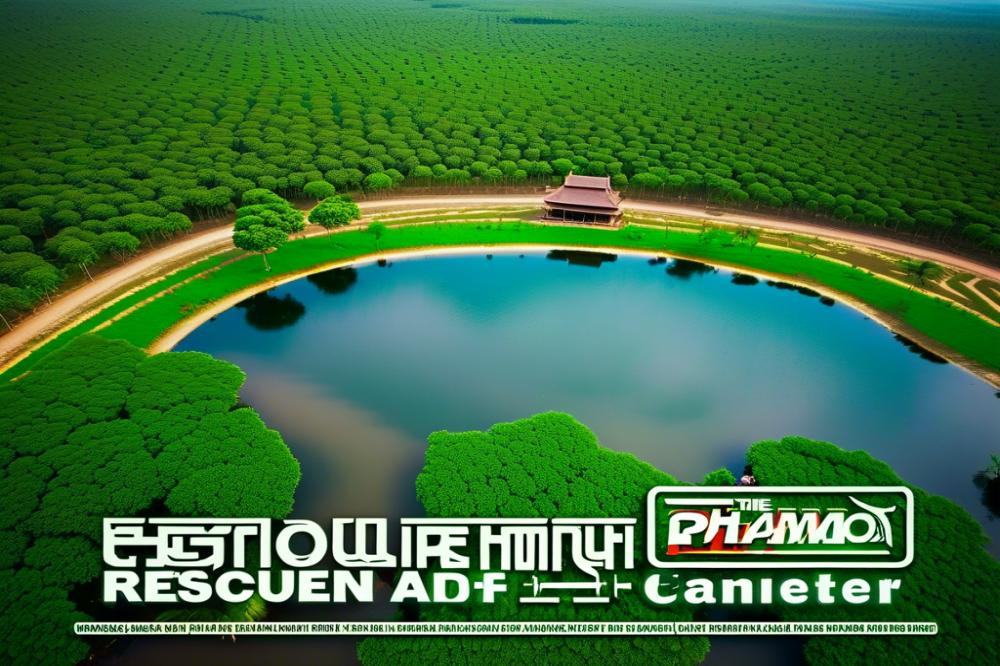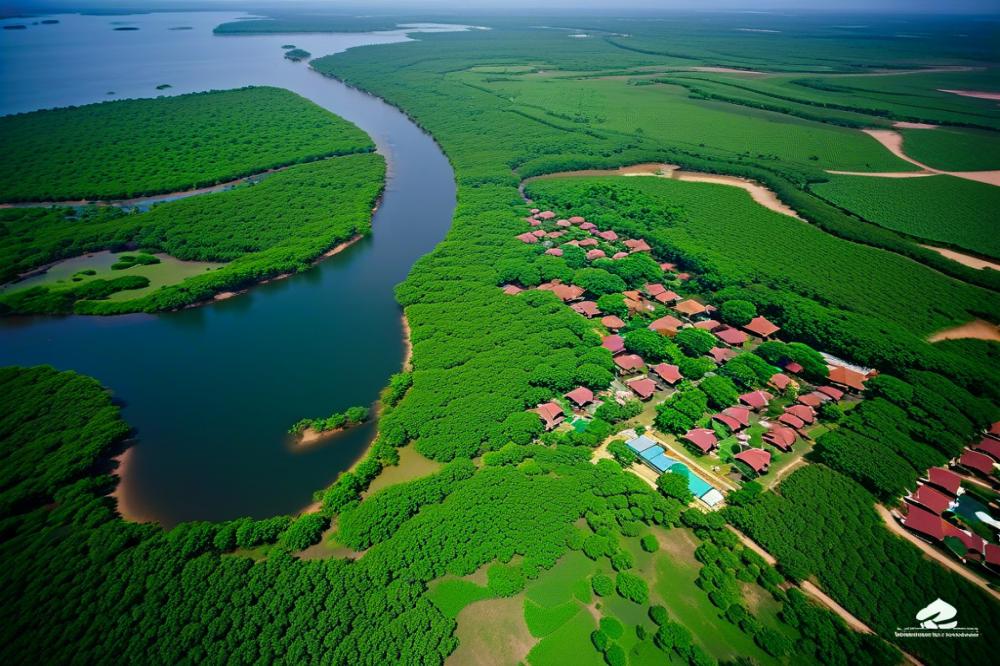Exploring the Wildlife of Phnom Tamao Wildlife Rescue Center
Phnom Tamao Wildlife Rescue Center stands out as a vital destination for wildlife enthusiasts in Cambodia. This nature sanctuary serves as a beacon of hope for many threatened and endangered species. Here, animal rescue takes a front seat, with dedicated teams working tirelessly to rehabilitate animals that have suffered from illegal hunting and habitat loss. The center offers a chance for visitors to witness these magnificent creatures up close while supporting crucial conservation efforts.
Biodiversity thrives within the center, showcasing a variety of native species. From majestic elephants to playful gibbons, the array of wildlife represents a fraction of the richness that Cambodia has to offer. As environmental concerns grow globally, the role of such rescue centers cannot be overstated. They not only provide a haven for rescued animals but also promote wildlife education for visitors eager to learn more about these incredible species.
Ecotourism plays a significant role in the center’s mission. By inviting guests to experience the wildlife, the center fosters a greater appreciation for nature. Travelers can immerse themselves in the vibrant ecosystem while contributing to sustainable tourism. Through guided tours, the center tells stories of hardship and recovery, highlighting the resilience of animals that have faced adversity.
In exploring the Phnom Tamao Wildlife Rescue Center, one truly engages with wildlife conservation on the ground level. This experience nurtures a deeper understanding of the challenges these animals face. Support for the center’s initiatives helps paint a brighter future for Cambodia’s wildlife. Educating people about the importance of protecting these vulnerable species is just as critical as the rehabilitation efforts taking place within the sanctuary.
History of Phnom Tamao Wildlife Rescue Center


The Phnom Tamao Wildlife Rescue Center was established in the late 1990s in Cambodia. Its creation responded to the urgent need for animal rescue in a country facing biodiversity loss. Local animals, many of which were endangered species, were suffering due to illegal poaching and habitat destruction. This facility became a beacon of hope for wildlife in distress.
From the beginning, the center aimed to rehabilitate animals and promote wildlife conservation efforts. It focused on various species, offering them a safe haven in a natural sanctuary. Over the years, it expanded its reach to include wildlife education programs for the public. Visitors have the chance to learn about the importance of preserving nature and protecting endangered species.
Significant milestones mark the center’s journey. In the early 2000s, its first successful rehabilitation and release of a group of rescued animals drew attention. This event highlighted the effectiveness of their programs. As Cambodia recognized the significance of ecotourism, the center quickly became a popular destination. People visit to witness the rehabilitation efforts firsthand and engage with local wildlife.
Today, the mission remains clear. The center strives to promote sustainable tourism while educating visitors about animal welfare. Many locals and tourists alike participate in its initiatives. These programs foster a sense of responsibility toward nature and encourage active involvement in conservation activities.
By addressing the challenges of wildlife protection in Cambodia, the center hopes to inspire future generations. Its vision embraces a balance between human interaction and wildlife preservation.
Biodiversity at Phnom Tamao Wildlife Rescue Center


The Phnom Tamao Wildlife Rescue Center is home to a rich variety of species. This place plays a crucial role in the conservation of many endangered animals. For instance, the center provides sanctuary for the Indochinese tiger, a species that is facing severe threats in the wild. Besides tigers, visitors can encounter other endangered species, such as the Asiatic elephant and the crocodile species native to Cambodia. These animals often come to the center for rehabilitation after suffering from habitat loss and poaching.
In Cambodia, biodiversity is vital for ecological health. The country’s unique ecosystems support countless species of flora and fauna. Sadly, many species are at risk due to human activities. The center actively participates in conservation efforts to combat this crisis. By working with local communities, it promotes wildlife education and raises awareness of the need to protect these irreplaceable creatures.
This nature sanctuary also plays an essential role in ecotourism. Tourists visit to learn about the wildlife and appreciate natural beauty. Sustainable tourism helps provide funding for rehabilitation projects and the care of rescued animals. Visitors leave with a deeper understanding of local wildlife and the importance of preserving it. Education is a key part of the center’s mission.
The presence of diverse species contributes to the ecological balance within the region. Each animal plays a specific role in its habitat, and losing any of them can disrupt the entire system. Therefore, centers like this one are vital in maintaining biodiversity. By prioritizing the rescue and rehabilitation of endangered species, it highlights the need for ongoing conservation efforts across Cambodia.
Moreover, the center stands as an example of how human efforts can lead to positive change. Collaboration with international organizations strengthens its mission. Volunteers and staff dedicate their time to nurturing vulnerable animals. Their passion helps ensure a brighter future for species at risk. The center emphasizes that caring for wildlife is crucial for everyone.
Animal Rehabilitation and Care


The rehabilitation process at the Phnom Tamao Wildlife Rescue Center is vital for many rescued animals. Once an animal arrives, medical professionals conduct a thorough examination. Injuries are treated immediately. Orphaned wildlife receives special attention. Caregivers provide round-the-clock support, often feeding infants with specialized formulas. This hands-on care is crucial for their survival.
During recovery, animals live in comfortable enclosures that mimic their natural habitats. Enrichment activities are essential for their mental health. Caretakers introduce toys, climbing structures, and other items to stimulate their instincts. These experiences teach animals how to behave in the wild. All of this effort helps prepare them for eventual release.
Success stories are a testament to the effectiveness of conservation efforts. For instance, several species once threatened have been successfully rehabilitated. After months of care, many animals have returned to their natural environments. One notable example is a gibbon who was rescued from illegal wildlife trade. After rehabilitation, this gibbon climbed trees again, finding food the way its species should.
Wildlife education also plays a significant role in the center’s mission. Visitors learn about endangered species and the importance of biodiversity. Such programs raise awareness about animal rescue and sustainable tourism in Cambodia. The center collaborates with local communities to promote ecotourism. Engaging people not only informs them but also fosters respect for nature.
The stories of these animals illustrate resilience. Every creature deserves a second chance. When people visit the sanctuary, they witness firsthand the results of dedicated care and conservation. The joy of seeing a once-injured animal thrive in its habitat is unmatched.
Wildlife Education and Community Involvement


The Phnom Tamao Wildlife Rescue Center focuses on offering educational programs for both visitors and local communities. These programs aim to teach about wildlife, especially endangered species in Cambodia. Understanding biodiversity is crucial for fostering respect for nature. By participating in workshops, individuals learn about animal rescue practices. This knowledge shapes their views on conservation.
Interactive exhibits and guided tours provide hands-on experiences. Guests can see the rehabilitation efforts in action. Observing how animals recover in a nature sanctuary creates connection and empathy. Such experiences inspire visitors to support wildlife initiatives. Education is an essential tool in promoting conservation. When people grasp the importance of protecting ecosystems, they are more likely to engage in sustainable tourism practices.
Community involvement is a key part of the center’s mission. Locals are invited to participate in programs that raise awareness about animal welfare. The organization collaborates with schools for field trips and educational fairs. By making wildlife education accessible, the center nurtures a sense of responsibility among nearby residents. Understanding the critical roles animals play in the ecosystem strengthens local conservation efforts.
The center also promotes ecotourism as a way to support wildlife. Visitors are encouraged to respect the natural habitat while enjoying their time at the sanctuary. This kind of tourism positively impacts both the economy and animal protection. Educating the community about the benefits of responsibly observing wildlife fosters a culture of conservation. Raising awareness about sustainable practices contributes to the long-term survival of various species.
Lastly, sharing success stories of rescued animals motivates residents to take action. These narratives show the positive impact of community engagement in conservation. When locals are inspired, they often share their knowledge with others. This ripple effect can lead to a more extensive understanding of wildlife and its preservation. Together, the community and the rescue center can drive meaningful progress towards protecting Cambodia’s rich biodiversity.
Ecotourism and Sustainable Practices
Phnom Tamao Wildlife Rescue Center is more than just a refuge for animals. It serves as an ecotourism destination, where visitors can connect with nature and support crucial conservation efforts. By participating in these activities, tourists play a vital role in protecting Cambodia’s biodiversity.
Every ticket purchased contributes directly to animal rescue initiatives. Funds go toward the daily care of endangered species and rehabilitation programs. Visitors help create awareness about the threats faced by wildlife in Cambodia, leading to better protection measures.
The center emphasizes wildlife education, ensuring guests learn about local flora and fauna. Interactive exhibits and guided tours promote understanding of the delicate balance within ecosystems. This knowledge inspires visitors to adopt sustainable practices in their own lives.
Additionally, local communities benefit significantly from ecotourism. Jobs are created, allowing residents to engage with visitors and share their cultural heritage. Restaurants and shops near the sanctuary thrive as tourists explore the surrounding area, which helps bolster the local economy.
Some eco-friendly initiatives are in place at the center. Solar panels provide clean energy, reducing the carbon footprint of operations. Water conservation measures have also been implemented to preserve resources. These actions reflect a commitment to sustainability, making the center a model for responsible tourism.
In visits to this nature sanctuary, individuals witness firsthand the importance of preserving wildlife. Experiences gained here can lead to a greater appreciation for conservation efforts. Thus, each visit becomes an opportunity to learn and contribute positively to the environment.
Visitor Experience and Activities
Visitors to the wildlife rescue center can expect an engaging and educational experience. Guided tours provide a closer look at the animals in this nature sanctuary. Knowledgeable staff lead you through the center, sharing stories about their conservation efforts and the challenges many endangered species face in Cambodia.
Wildlife education is a key aspect of each visit. As guests explore, they learn about animal rescue initiatives aimed at rehabilitating injured or orphaned creatures. Various species call this place home, many of which are rare and need protection. Observing these animals in their habitats fosters a deeper appreciation for biodiversity.
In addition to tours, interactive activities allow for responsible engagement with wildlife. For instance, visitors may participate in feeding sessions, under guidance, where they can safely learn about animal diets and behaviors. Such moments create lasting memories while promoting awareness about sustainable tourism.
Eco-conscious travelers should remember some tips to enhance their visit. First, choose to walk or cycle around the sanctuary, minimizing your carbon footprint. Supporting local businesses by purchasing souvenirs made from recycled materials also contributes to the local economy and conservation efforts. Additionally, avoid feeding wild animals outside of organized sessions.
Photography is encouraged, but it’s important to respect the wildlife. Using telephoto lenses helps capture stunning images without disturbing the animals. Keep noise levels low to ensure a calm environment for both creatures and guests. Respecting the rules set by the center is essential in contributing to its mission.
Visiting during weekday mornings can provide a quieter experience, allowing for more interaction with staff and deeper learning opportunities. Engaging with animals in a controlled manner emphasizes the center’s commitment to animal welfare. Every visitor plays a role in supporting the ongoing efforts to protect wildlife and their habitats.
Final Thoughts on Wildlife Conservation in Cambodia
Phnom Tamao Wildlife Rescue Center plays a crucial role as a sanctuary for animals in need. It stands out not only for its dedicated efforts in animal rescue but also for its focus on education and conservation. Visitors can witness the work being done to rehabilitate creatures that would otherwise face difficult fates. This center not only saves wildlife but also fosters a deeper understanding of the issues facing these species in their natural habitats.
Educating the public is one of the center’s key missions. Through informative tours and engaging programs, it raises awareness about the importance of wildlife preservation. Animals here often serve as ambassadors for their wild counterparts. This approach encourages positive changes in behavior towards nature. It is important for individuals to realize that they can contribute to conservation efforts simply by being informed.
Supporting this rescue center entails more than just visiting. Responsible tourism is essential for sustainability in Cambodia. Many visitors experience firsthand the impact of their contributions through entrance fees and donations. These funds help provide for the animals and maintain the facilities. Every small effort counts when it comes to preserving the rich biodiversity of the region.
The world is facing unprecedented challenges in wildlife conservation. Each person can make a difference by visiting places like this wildlife rescue center. By promoting awareness and supporting these initiatives, we can collectively strive to make a positive impact. A trip to the center will be both enlightening and rewarding. In conclusion, be part of the solution – support animal rescue and witness the beauty of Cambodia’s wildlife thrive.



